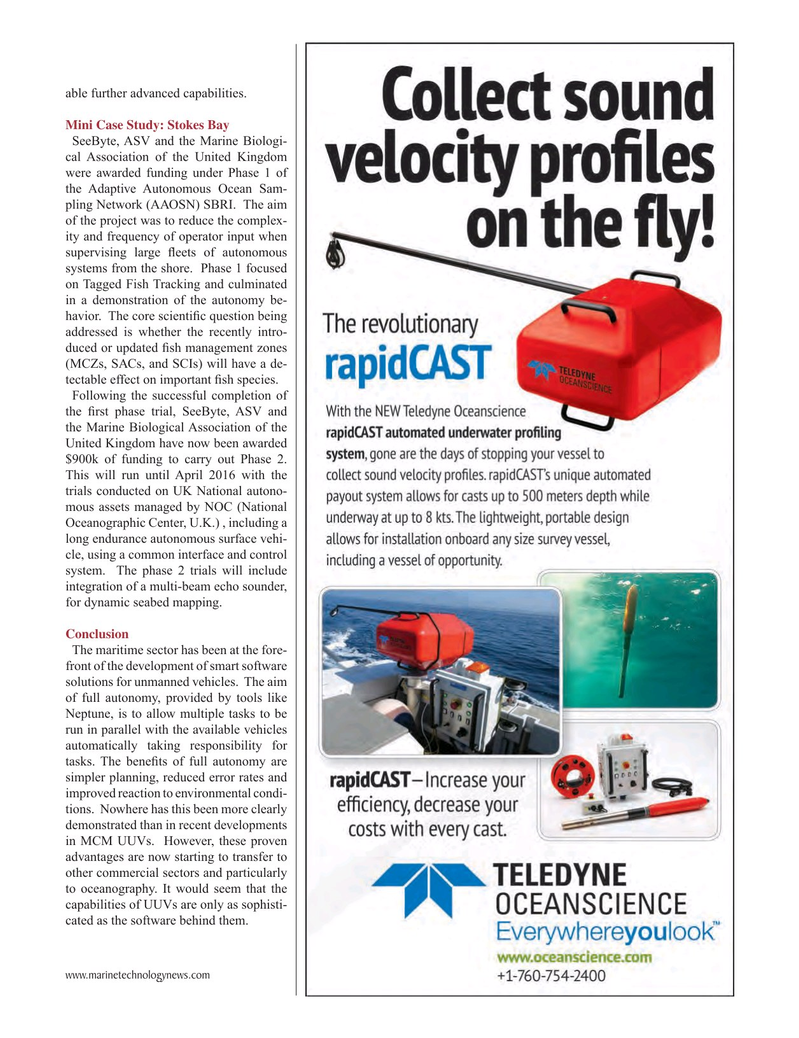
Page 41: of Marine Technology Magazine (October 2015)
AUV Operations
Read this page in Pdf, Flash or Html5 edition of October 2015 Marine Technology Magazine
able further advanced capabilities.
Mini Case Study: Stokes Bay
SeeByte, ASV and the Marine Biologi- cal Association of the United Kingdom were awarded funding under Phase 1 of the Adaptive Autonomous Ocean Sam- pling Network (AAOSN) SBRI. The aim of the project was to reduce the complex- ity and frequency of operator input when supervising large ? eets of autonomous systems from the shore. Phase 1 focused on Tagged Fish Tracking and culminated in a demonstration of the autonomy be- havior. The core scienti? c question being addressed is whether the recently intro- duced or updated ? sh management zones (MCZs, SACs, and SCIs) will have a de- tectable effect on important ? sh species.
Following the successful completion of the ? rst phase trial, SeeByte, ASV and the Marine Biological Association of the
United Kingdom have now been awarded $900k of funding to carry out Phase 2.
This will run until April 2016 with the trials conducted on UK National autono- mous assets managed by NOC (National
Oceanographic Center, U.K.) , including a long endurance autonomous surface vehi- cle, using a common interface and control system. The phase 2 trials will include integration of a multi-beam echo sounder, for dynamic seabed mapping.
Conclusion
The maritime sector has been at the fore- front of the development of smart software solutions for unmanned vehicles. The aim of full autonomy, provided by tools like
Neptune, is to allow multiple tasks to be run in parallel with the available vehicles automatically taking responsibility for tasks. The bene? ts of full autonomy are simpler planning, reduced error rates and improved reaction to environmental condi- tions. Nowhere has this been more clearly demonstrated than in recent developments in MCM UUVs. However, these proven advantages are now starting to transfer to other commercial sectors and particularly to oceanography. It would seem that the capabilities of UUVs are only as sophisti- cated as the software behind them.
www.marinetechnologynews.com
MTR #8 (34-49).indd 41 9/30/2015 9:30:11 AM

 40
40

 42
42
